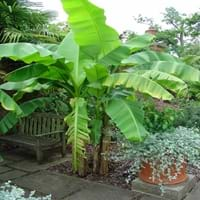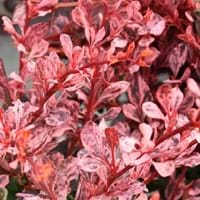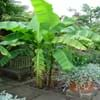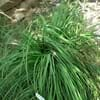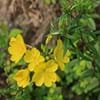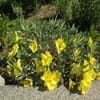Life Span
Perennial
Perennial
Origin
Japan
Eastern Asia, Japan
Types
Not available
Not Available
Habitat
Open areas, Open Plains
Old fields, stream banks
USDA Hardiness Zone
6-11
4-8
Sunset Zone
H1, H2, 2a, 2b, 3a, 3b, 4, 5, 6, 7, 8, 9, 14, 15, 16, 17, 18, 19, 20, 21, 22, 23, 24
A3, 2b, 3a, 3b, 4, 5, 6, 7, 8, 9, 10, 11, 12, 13, 14, 15, 16, 17, 18, 19, 20, 21, 22, 23, 24
Habit
Upright/Erect
Oval or Rounded
Flower Color
Yellow, Brown
Yellow, Yellow green
Flower Color Modifier
Bicolor
Not Available
Fruit Color
Yellow green
Red orange
Leaf Color in Spring
Green
Light Green
Leaf Color in Summer
Green
Green
Leaf Color in Fall
Green
Purple, Orange, Burgundy, Crimson
Leaf Color in Winter
Light Green
Not Available
Leaf Shape
Cone shaped
Obovate
Plant Season
Spring, Summer, Fall, Winter
Spring, Summer, Fall, Winter
Sunlight
Full Sun
Full Sun, Partial Sun
Type of Soil
Loam
Clay, Loam, Sand
The pH of Soil
Acidic, Neutral
Acidic, Neutral, Alkaline
Soil Drainage
Well drained
Average
Bloom Time
Summer
Spring, Late Spring
Tolerances
Drought
Pollution, Drought, Salt, Soil Compaction
Where to Plant?
Ground
Ground, Pot
How to Plant?
From bulbs, From Rhizomes, Seedlings
Seedlings
Plant Maintenance
Medium
Medium
Watering Requirements
Keep ground moist, Requires regular watering
Requires regular watering during dry weather
In Summer
Lots of watering
Lots of watering
In Spring
Moderate
Moderate
In Winter
Average Water
Average Water
Soil pH
Acidic, Neutral
Acidic, Neutral, Alkaline
Soil Type
Loam
Clay, Loam, Sand
Soil Drainage Capacity
Well drained
Average
Sun Exposure
Full Sun
Full Sun, Partial Sun
Pruning
Remove damaged leaves, Remove dead branches, Remove dead leaves
Remove damaged leaves, Remove dead branches, Remove dead leaves
Fertilizers
All-Purpose Liquid Fertilizer
All-Purpose Liquid Fertilizer
Pests and Diseases
Aphids, Rots, Scale, Spider mites
Red blotch, Sunken patches
Plant Tolerance
Drought
Drought
Flowers
Yes
Insignificant
Flower Petal Number
Single
Single
Foliage Texture
Bold
Medium
Foliage Sheen
Glossy
Matte
Attracts
Not Available
Birds
Allergy
Hives, Itchiness, Swelling, Throat itching, wheezing
Not Available
Aesthetic Uses
Not Used For Aesthetic Purpose
Borders
Beauty Benefits
Not Available
Not Available
Environmental Uses
Air purification
Air purification
Medicinal Uses
Fiber, Hair Loss, Kidney Stones, Piles, Vitamin C
Anthelmintic, Antibacterial, Antiseptic, Cancer
Part of Plant Used
Fruits, Leaves
Fruits, Leaves
Other Uses
Used as Ornamental plant, Used for its medicinal properties, Used in herbal medicines
Used to make yellow dye
Used As Indoor Plant
No
No
Used As Outdoor Plant
Yes
Yes
Garden Design
Cutflower, Feature Plant, Foundation, Mixed Border, Screening / Wind Break, Tropical
Edging, Foundation, Hedges, Mixed Border, Rock Garden, Wall
Botanical Name
MUSA basjoo
BERBERIS thunbergii
Common Name
Japanese banana,Japanese fibre banana,hardy banana
Japanese Barberry
In Hindi
हार्डी केला
Japanese Barberry
In German
hardy Banane
Thunberg-Berberitze
In French
banana hardy
Berberis thunbergii
In Spanish
plátano resistentes
Berberis thunbergii
In Greek
σκληραγωγημένο μπανάνα
Japanese Barberry
In Portuguese
de banana resistentes
Japanese Barberry
In Polish
hardy banana
Berberys Thunberga
In Latin
duros Musa sapientum fixa
Japanese Barberry
Phylum
Magnoliophyta
Magnoliophyta
Class
Liliopsida
Magnoliopsida
Order
Zingiberales
Ranunculales
Family
Strelitziaceae
Berberidaceae
Clade
Monocotyledonous
Angiosperms, Eudicots
Tribe
Not Available
Not Available
Subfamily
Not Available
Not Available
Number of Species
Not Available
Not Available
Properties of Hardy Banana and Rose Glow Barberry
Wondering what are the properties of Hardy Banana and Rose Glow Barberry? We provide you with everything About Hardy Banana and Rose Glow Barberry. Hardy Banana doesn't have thorns and Rose Glow Barberry doesn't have thorns. Also Hardy Banana does not have fragrant flowers. Hardy Banana has allergic reactions like Hives, Itchiness, Swelling, Throat itching and wheezing and Rose Glow Barberry has allergic reactions like Hives, Itchiness, Swelling, Throat itching and wheezing. Compare all the properties and characteristics of these two plants. Find out which of these plant can be used as indoor plant. If you are interested to decorate your house and garden, find out aesthetic uses, compare them and select the plant which will beautify your surrounding. Along with beautification, try comparing medicinal and edible uses of Hardy Banana and Rose Glow Barberry and you can choose the plant having best and most benefits.
Season and Care of Hardy Banana and Rose Glow Barberry
Season and care of Hardy Banana and Rose Glow Barberry is important to know. While considering everything about Hardy Banana and Rose Glow Barberry Care, growing season is an essential factor. Hardy Banana season is Spring, Summer, Fall and Winter and Rose Glow Barberry season is Spring, Summer, Fall and Winter. The type of soil for Hardy Banana is Loam and for Rose Glow Barberry is Clay, Loam, Sand while the PH of soil for Hardy Banana is Acidic, Neutral and for Rose Glow Barberry is Acidic, Neutral, Alkaline.
Hardy Banana and Rose Glow Barberry Physical Information
Hardy Banana and Rose Glow Barberry physical information is very important for comparison. Hardy Banana height is 300.00 cm and width 240.00 cm whereas Rose Glow Barberry height is 90.00 cm and width 120.00 cm. The color specification of Hardy Banana and Rose Glow Barberry are as follows:
Hardy Banana flower color: Yellow and Brown
Hardy Banana leaf color: Green
Rose Glow Barberry flower color: Yellow and Yellow green
- Rose Glow Barberry leaf color: Light Green
Care of Hardy Banana and Rose Glow Barberry
Care of Hardy Banana and Rose Glow Barberry include pruning, fertilizers, watering etc. Hardy Banana pruning is done Remove damaged leaves, Remove dead branches and Remove dead leaves and Rose Glow Barberry pruning is done Remove damaged leaves, Remove dead branches and Remove dead leaves. In summer Hardy Banana needs Lots of watering and in winter, it needs Average Water. Whereas, in summer Rose Glow Barberry needs Lots of watering and in winter, it needs Average Water.
